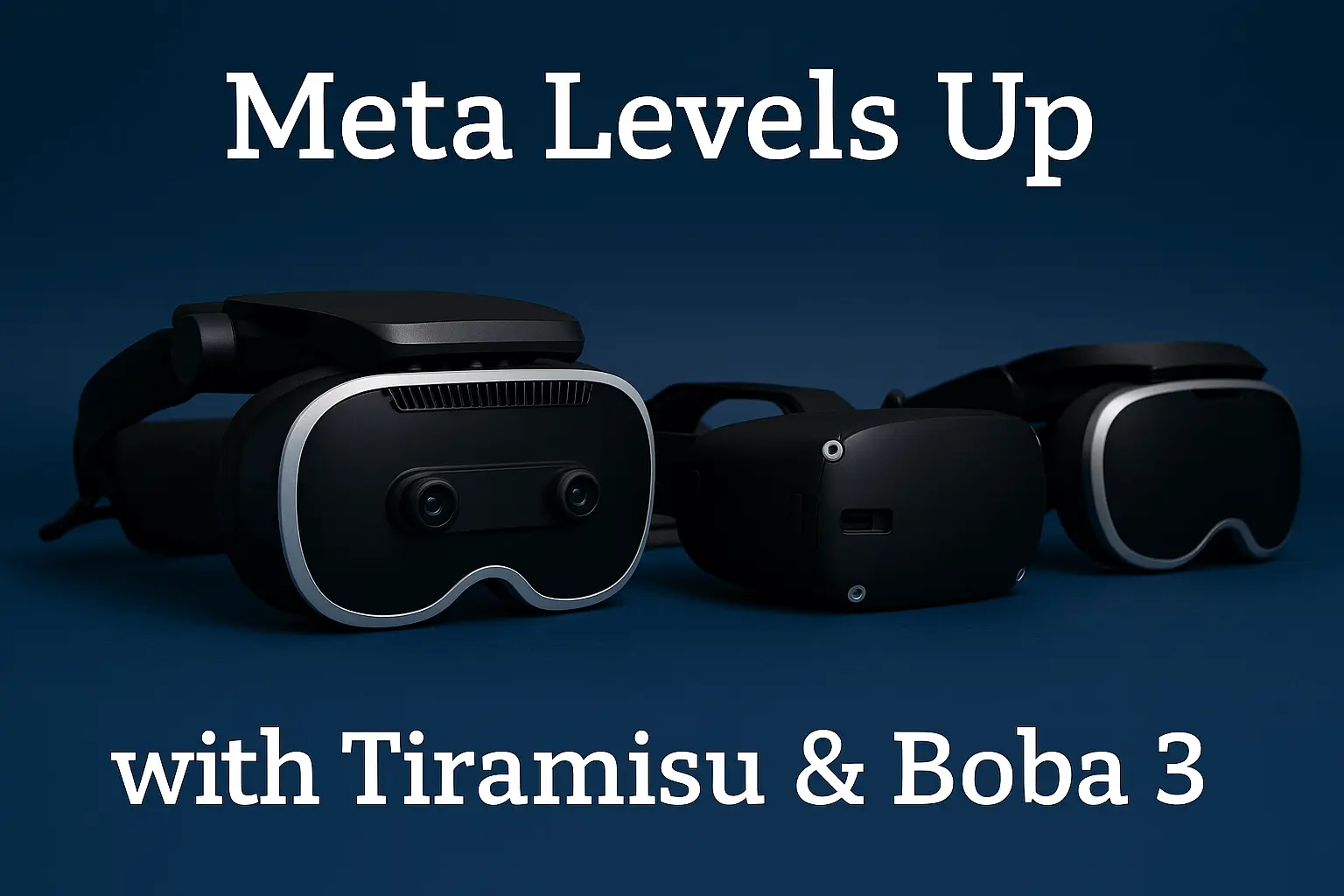Achieving virtual reality that rivals the real world often called passing the visual Turing test has been a cornerstone ambition in VR tech evolution. While it raises profound questions about ethics and human perception, the primary hurdle remains technological innovation.
At SIGGRAPH 2025, Meta Reality Labs showcased their most ambitious efforts yet, introducing prototypes Tiramisu and Boba 3. These devices promise unprecedented levels of realism, bringing us tantalizingly close to indistinguishable virtual environments. Attendees at the conference had hands-on opportunities to test these cutting-edge headsets, highlighting Meta's commitment to elevating VR fidelity.
Unveiling Tiramisu: Hyper-Realistic Visuals Redefined
Tiramisu stands out with its exceptional combination of 90 pixels per degree (PPD) resolution, high contrast ratios, and peak brightness of 1400 nits, surpassing human retinal resolution akin to 20/20 vision. Utilizing dual micro-OLED displays paired with custom glass lenses, this prototype delivers stunning clarity that could redefine how we interact with virtual spaces.
Enhanced by technologies like NVIDIA's DLSS 3, Tiramisu enables razor-sharp details, making even fine text legible from a distance imagine reading a book page in a simulated cozy room without any blur. According to Xuan Wang, a research scientist at Meta's OPALS division, the focus was on optimizing optical performance: "We prioritized high-contrast µOLED panels and custom glass lenses, building on architectures from devices like Quest 2 to maximize efficiency." This shift away from traditional fresnel or pancake lenses preserves brightness while boosting compactness and fidelity, though pancake designs in past models traded off luminance for size.
However, Tiramisu isn't without challenges. Its bulky form factor, heavier weight, and narrow 33°x33° field of view limit its practicality for everyday use. Meta has teased a Tiramisu 2 in development, suggesting refinements to address these issues. In the realm of VR porn, Tiramisu's hyper-realistic rendering could elevate adult content to new heights, offering lifelike textures and lighting that make immersive scenes feel extraordinarily intimate and believable, potentially revolutionizing user engagement in this niche.

Boba 3 Emerges: Ultra-Wide Immersion Takes Center Stage
Shifting gears, Boba 3 appears more consumer-ready with its sleek, polished design weighing only 660g, emphasizing comfort for prolonged sessions. Available in VR and mixed reality (MR) variants, its standout feature is an expansive field of view 180° horizontal and 120° vertical at 4K resolution per eye. This nearly doubles the coverage of Quest 3's 110° horizontal and 96° vertical FOV, creating a panoramic immersion that feels more natural and enveloping.
To power this vast vista, Boba 3 demands a high-performance PC equipped with a premium GPU, as noted by Meta's Yang Zhao: "We aimed to release this into the wild quickly to gather real-world feedback." This tethered setup ensures seamless processing for complex scenes, making it ideal for developers and enthusiasts pushing VR limits.
For VR porn applications, Boba 3's ultra-wide FOV could provide a more encompassing view, allowing users to feel fully surrounded by content, enhancing spatial awareness and interaction in adult simulations think dynamic, 360-degree scenarios with minimal distortion.

The Road Ahead for Meta's VR Innovations
These prototypes signal Meta's aggressive pursuit of the visual Turing test, blending advanced optics, AI-driven upscaling, and ergonomic designs. While Tiramisu excels in pixel-perfect realism and Boba 3 in expansive views, their integration could pave the way for future consumer headsets like a Quest successor. Challenges like bulkiness and hardware demands remain, but with rapid iterations, we might see commercial versions within a few years.
In the VR porn industry, such tech promises transformative experiences, where hyper-realism and wide immersion blur lines between fantasy and reality, potentially driving higher adoption and content innovation.
For more details, check out Meta's official Reality Labs blog, The Verge's coverage, and UploadVR's hands-on impressions.
